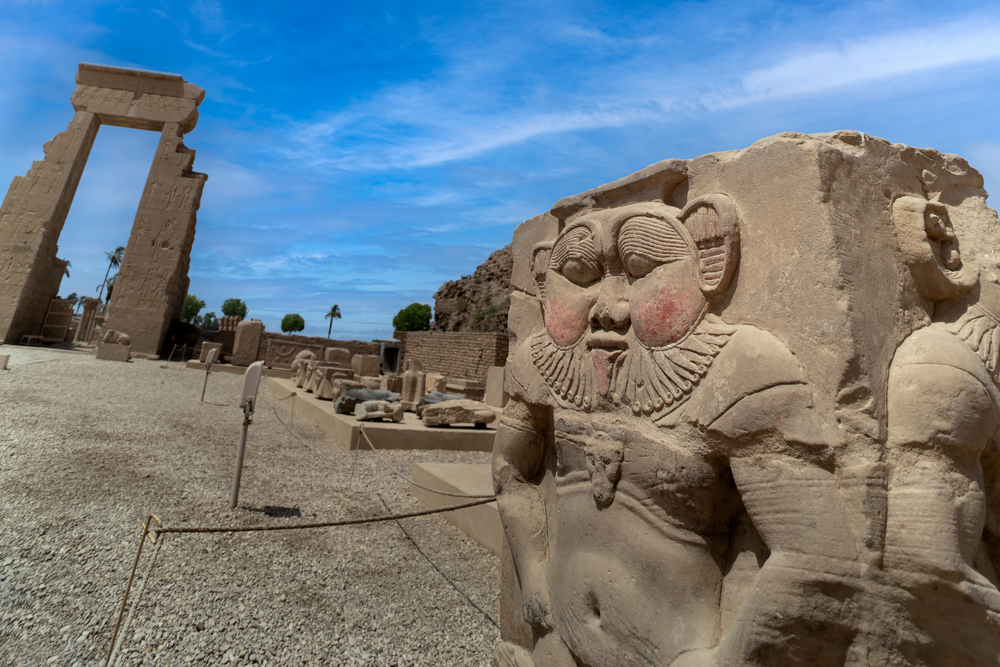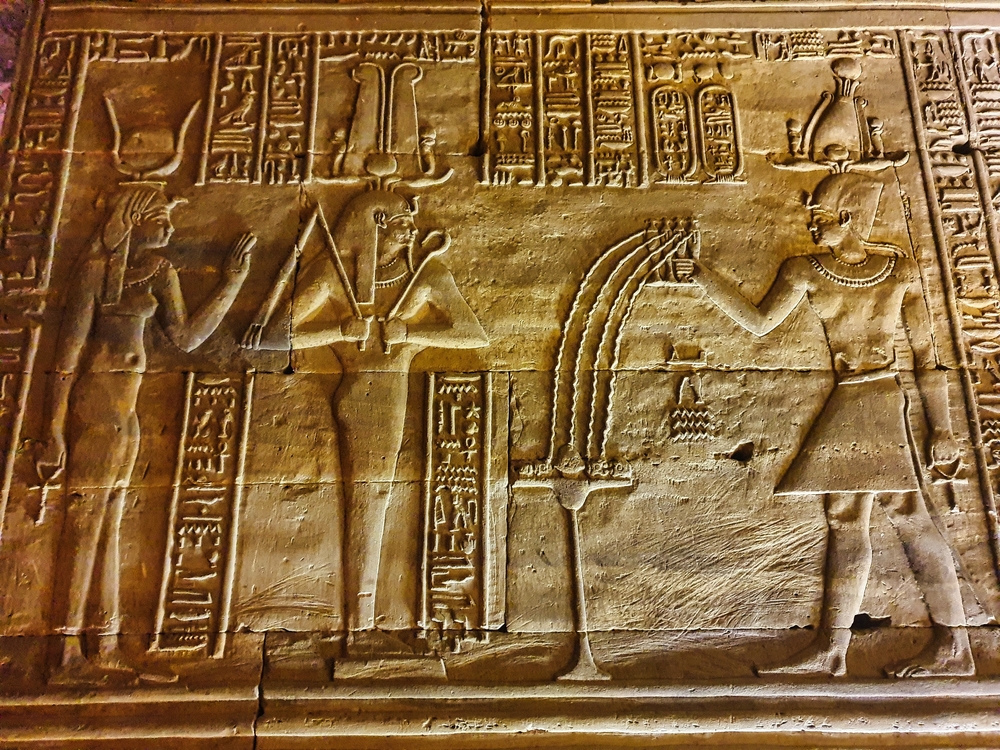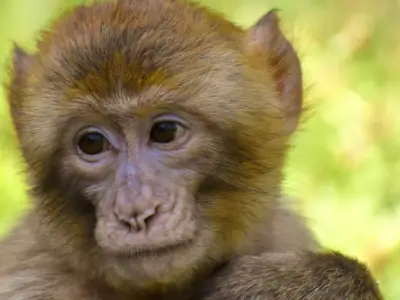Unlike the other sleek and stately gods of ancient Egypt, Bes is quite different. He's often depicted as a dwarf with a lion-like face, and he stands out both for his appearance and for his intriguing role in Egyptian culture and mythology.
Jump to:
Recommended for you!
Best SellersWho is Bes in Egyptian Mythology?
Bes is one of the more unusual and beloved gods in Egyptian mythology. Unlike many Egyptian gods who are shown in profile, Bes is depicted facing forward. This quirky god is often shown with a bearded, lion-like face, a protruding tongue, and a stocky, dwarf-like body. His appearance may seem odd at first, but each feature has a specific significance.
What is Bes the God of?
Bes is primarily known as a protector god. He is the god of households, mothers, children, and childbirth. Ancient Egyptians believed Bes protected families from evil spirits and misfortune. He was also associated with music, dance, and sexual pleasure, bringing joy and good fortune to homes.
The Myths and Legends of Bes

Bes may not have the extensive tales associated with some other gods, but the myths and legends surrounding him are just as significant and captivating. These stories highlight his role as a protector and bringer of joy in ancient Egyptian culture.
Bes and Household Protection
One of the key legends about Bes involves his role as a guardian of households. It is said that Bes would stand at the entrance of homes to ward off evil spirits and misfortune. His fierce, lion-like face and loud, joyous music would scare away any malevolent forces trying to enter.
Bes and Childbirth
In another significant myth, Bes is deeply connected with childbirth. He is believed to have the power to protect mothers and newborns during the birthing process. Bes would dance and play music to keep both mother and child safe from harm, ensuring a successful and joyful birth.
Bes in Dreams
Bes also appears in the myths related to dreams. Ancient Egyptians believed that Bes could protect them from nightmares and ensure pleasant dreams. His image was often carved on bedposts and headrests to safeguard the sleeper from any nocturnal evil spirits.
The Symbols of Bes
Bes's symbols reflect his role as protector and bringer of joy. Each symbol carries deep significance and highlights different aspects of his divine responsibilities.
- Lion Mask: The lion mask is one of Bes's most recognisable symbols. It represents his fierce protective nature and his ability to ward off evil spirits.
- Musical Instruments: Musical instruments, such as tambourines and harps, are often associated with Bes. These instruments signify his connection to music, dance, and festivity, emphasising his role in bringing joy and celebration to households.
- Dwarf: Bes's dwarf-like appearance symbolises his unique status among the gods. It highlights his approachable nature and his role as a guardian of the common people.
What Powers Does Bes Have?

Bes's powers are extensive and reflect his important role in ancient Egyptian daily life. His abilities are vast and impactful, both in the mortal realm and in the divine spheres.
- Protection: Bes is primarily known for his protective powers. He has the ability to ward off evil spirits and misfortune, ensuring the safety and well-being of families.
- Joy and Celebration: Bes's powers also extend to bringing joy and celebration. His presence in households is believed to bring happiness, music, and dance, creating a positive and festive atmosphere.
- Childbirth Assistance: Bes has the extraordinary ability to protect mothers and newborns during childbirth. His presence is thought to ensure a safe and successful birthing process, free from any harm or danger.
Bes's Relationships and Family Tree
Though not as extensive as those of some other gods, Bes's relationships and family connections still highlight his integral role within the Egyptian pantheon. His associations with other deities reflect his importance in protecting and bringing joy to ancient Egyptians' lives.
Bes and Beset (Wife)
Beset is often considered Bes's wife. She shares his protective and joyful qualities, and together, they symbolise the security and happiness of the household. Their union represents the combined strength and cheerfulness that they bring to families, ensuring their safety and well-being.
Bes and Taweret
In some traditions, Bes is associated with Taweret, the goddess of childbirth and fertility. Taweret is often depicted as a hippopotamus and shares Bes's role in protecting mothers and children. Their collaborative relationship highlights their joint efforts in safeguarding families during childbirth and raising children.
Bes and Hathor
Bes is sometimes linked to Hathor, the goddess of music, dance, and love. Hathor's joyful and nurturing attributes complement Bes's role in bringing festivity and happiness to households. Their connection highlights the importance of music and dance in fostering a joyful and protective environment.
Bes and Horus
In some myths, Bes is connected with Horus, the falcon-headed god of kingship and the sky. Bes's role as a protector extends to safeguarding Horus, particularly in his childhood when he was vulnerable to the threats posed by his uncle Set. This relationship emphasises Bes's protective nature and his role in ensuring the safety of the young and innocent.
Bes and Isis
Bes is also associated with Isis, the goddess of magic and motherhood. Isis's protective and nurturing qualities align with Bes's functions, and together they work to shield families from harm and bring joy to their lives. This partnership highlights the important role of both gods in maintaining the safety and happiness of households.
Bes's Worship and Legacy

Though not as prominent as some other deities, Bes held a special place in the hearts of ancient Egyptians. His unique role as a household protector and bringer of joy ensured that his worship and legacy endured throughout the centuries.
The Temple of Bes in Egypt
While Bes did not have large temples dedicated solely to him like other gods, his presence was significant in many household shrines and smaller temple spaces. These spaces often featured images and statues of Bes, reflecting his role in daily life. One of the notable sites where Bes was worshipped is the temple of Hathor at Dendera, where his images can be found alongside those of other protective deities.
Bes’ Statues
Statues of Bes have been discovered throughout Egypt, often in domestic settings. These statues were believed to embody the spirit of Bes, allowing his protective presence to be felt in homes. The unique craftsmanship of these statues, with Bes's distinctive dwarf-like body and lion-like face, highlights the importance of his role in warding off evil and bringing joy.
These statues also served as talismans, believed to provide safety, happiness, and protection against evil spirits. Many were placed in living spaces, near beds, or in areas where families gathered, ensuring Bes’s constant guardianship.
Making Offerings to Bes
To honour Bes, ancient Egyptians made various offerings to invoke his protection and blessings. These offerings often included small figurines, amulets, food, and drink. Common offerings included bread, beer, and flowers, reflecting Bes's joyous and celebratory nature.
In modern times, those who feel a connection to Bes might offer symbols of protection and joy, such as small musical instruments, candles, or figurines. Creating a small altar with images of Bes, along with flowers and stones associated with his energy, like carnelian and turquoise, is a way to connect with his protective and joyful essence.
Bes in Modern Egyptology
The fascination with Bes continues in modern Egyptology. Archaeologists and scholars frequently uncover new artefacts and inscriptions that shed light on the worship and significance of Bes in ancient times. Studies of Bes have provided valuable insights into the daily lives and domestic practices of the ancient Egyptians.
Bes's enduring legacy represents his importance in bringing safety, joy, and protection to households across ancient Egypt. His distinctive image and role continue to capture the imagination of those interested in Egyptian mythology.
Recommended for you!
Best SellersFrequently Asked Questions About Bes
Why Does Bes Face Forward?
Unlike most Egyptian gods depicted in profile, Bes faces forward. This unique depiction is likely because Bes was a protective deity meant to confront evil head-on. Facing forward made him more approachable and effective in his role as a guardian against malevolent forces.
What Animal Does Bes Represent?
Bes is often associated with the lion, which is evident in his lion-like features. His fierce visage was intended to scare away evil spirits and protect the household. The lion, a symbol of strength and protection, was a fitting animal representation of this god.
Why is Bes Important?
Bes's importance lies in his role as a guardian and symbol of happiness. In a world filled with uncertainties and dangers, having a deity like Bes provided a sense of security and comfort. His joyful nature also reminded people of the importance of music, dance, and pleasure in their lives.
Is Bes the god of dwarves?
Bes is often depicted as a dwarf, but he is not specifically the god of dwarves. His dwarf-like appearance symbolises his unique status among the gods and his approachability as a protector of the common people.
Study Egyptian Mythology for £29
If you’re intrigued by Egyptian mythology and want to learn more, consider enrolling in the Egyptian Mythology Diploma Course at Centre of Excellence. For a limited time, you can access this course for just £29.













